Passive House Wall Systems: Bringing Existing Buildings Near-Passive Without Shutting Them Down

Older buildings today aren’t just about a “retro” facade. They’re about constant heat loss, tenant complaints, and utility bills no one wants to open. The Passive House standard may look like something only for new construction, but its principles can be applied surprisingly well to existing walls — without emptying the building or shutting down the business.
Below we’ll look in plain language at what a “passive” wall really means in practice, which metrics actually matter, what a step-by-step retrofit path looks like — and how prefab facade systems like Dextall fit into that picture.
What a “Passive” Wall Means in Practice
A “passive” wall isn’t about one magic product. It’s about how the entire assembly works as part of the building’s energy envelope. The goal is simple: minimize heat loss, prevent uncontrolled air leakage, and eliminate cold spots at details.
In real life that means: no drafts at the windows, no “ice-cold” corners, dry interior surfaces, and heating and cooling systems that run in a smoother, more stable mode. To get there, passive-style design focuses on three pillars: continuous insulation, airtightness, and control of thermal bridges.
The Three Pillars: Continuous Insulation, Airtightness, Thermal-Bridge Control
Continuous insulation
Insulation should wrap the building like a continuous blanket — with no breaks at balconies, lintels, panel joints, or slab edges. The point isn’t just to add inches; it’s to close the thermal loop across all facades and key details.
Airtightness
If the wall isn’t airtight, cold air finds its way through gaps and cracks, and even a thick insulation layer won’t save you. A passive-oriented wall has a clearly defined air barrier (membranes, tapes, sealants) that forms a continuous air-tight layer. Fresh air comes through the ventilation system — not through random leaks.
Thermal-bridge control
Thermal bridges are areas where the assembly is thinner or more conductive — corners, wall-to-slab joints, balcony connections, lintels. In a passive approach, each of these details is modeled and improved: with local insulation, thermal breaks, or a different layer sequence to remove cold spots and reduce condensation risk.
Metrics That Matter: n50, U-Factor, and ψ-Values
To understand how much a wall actually moves a building toward passive performance, you need more than a “feels warmer” impression. Three numbers matter most: U-value for the wall area, n50 for overall airtightness, and ψ-values for linear details.
- U-factor (U-value) – How much heat passes through 1 m² of wall per degree of temperature difference. The lower the U, the better the wall performs and the lower the heat loss.
- n50 – The blower door test result, showing how many air changes per hour occur at 50 Pa pressure difference. This is the real-world indicator of how airtight the building actually is.
- ψ-values (psi-values) – Additional heat losses at linear details like wall-to-slab joints, window frames, and perimeter edges. Even with a good U-value, high ψ-values can eat up a big part of the gains and create mold-prone zones.
Together, these three metrics give a technical — not marketing — answer to how close an existing building has moved toward passive performance of its envelope.
Retrofit Roadmap: From Survey to Results
To bring an existing building close to passive performance, “let’s insulate the facade” isn’t a plan — it’s just a wish. You need a clear roadmap: where you are now, where you want to go, and how you’ll measure success.
A typical retrofit roadmap looks like this: start with a quick but thorough survey; identify the zones with the highest losses; develop design solutions for wall systems or panels; install them; and finally verify the result — not just on paper, but in actual measurements. That way you’re investing not in a vague “it’ll feel warmer,” but in measurable reductions in losses, lower bills, and better comfort.
Rapid Energy Audit and Thermography
A rapid energy audit is like a quick medical checkup before serious treatment. It doesn’t take months, but it gives you a solid picture of what’s going on with the building.
Typical steps:
- collect available data on the building and its energy use
- inspect facades, windows, joints, and technical areas on site
- run thermal imaging during the cold season
- map obvious heat-loss zones and potential thermal bridges
- build a priority list of details that offer the biggest impact if upgraded
Combining a physical walk-through with thermography works like an X-ray: thermal images clearly show where the wall is “glowing,” where corners are freezing, and how balconies, lintels, and slab edges behave. After that, facade decisions are based on facts, not guesswork.
Priority Details: Window Zones, Lintels, Slab Edges
Once the initial diagnostics are done, the focus shifts from the “average wall” to the main trouble spots: window perimeters, lintels, and slab edges.
Window zones stack up issues — leaky frame-to-wall joints, weak or missing insulation, random penetrations — so that’s where drafts and cold spots usually appear. Lintels show up on thermal images as bright bands of heat loss, and slab edges form a “cold frame” around the building that people near the facade can literally feel.
If you treat these details as top priorities — with targeted insulation and well-designed connections to the new facade system — the retrofit payoff is much bigger than from just adding a thicker blanket of insulation to the wall.
Dextall in a Passive Scenario
In projects aiming to move a building toward passive-level performance, Dextall acts as an industrialized solution: a light-gauge, metal-framed, unitized prefab panel system with fully factory-integrated windows, cladding, and a non-combustible core insulation, designed for high-performance, airtight, watertight, and fire-resistant facades.
For retrofit, Dextall highlights that the system is “high-performance, net zero or passive house ready.” Once the panels are installed, there’s no need for exterior scaffolding or swing stages — the main building envelope arrives on site as ready-to-install modules.
Prefab Panels with Integrated Windows and a Non-Combustible Core
Dextall describes its product as factory-assembled modules with fully integrated windows, cladding, and a non-combustible insulation core inside a light metal frame. The panels are engineered to arrive on site airtight, watertight, structurally sound, and fire-resistant — essentially as finished envelope elements.
Key aspects in a passive / near-passive context:
- integrated multi-layer system: windows, cladding, and non-combustible core insulation in a single module
- high-performance facades with airtightness, water resistance, acoustic performance, and fire resistance
- focus on retrofit construction and high-performance, net-zero, or passive-ready applications
The idea is to move quality control to the factory and get fast installation with minimal exterior work on site.
Digital Prep with Dextall Studio
Dextall Studio is a BIM-integrated platform that connects facade design, engineering, and cost in a single digital environment. It works as a Revit-based tool with a library of facade solutions and gives architects end-to-end visibility — from concept to documentation and execution — with real-time feedback on cost impacts.
The company notes that Studio can shorten design and construction cycles by up to 80%, compressing the path from initial model to panel installation from months to weeks. It also provides real-time exterior skin cost updates, standardized details, 2D/3D sections, bills of materials, and facade analytics.
In a passive-oriented strategy, that means a transparent digital pipeline: the team can see panel build-ups, details, materials, and cost early at the model stage — before anyone sets foot on the jobsite.
Short FAQ on Passive Walls and Retrofit
Do we have to go all the way to full Passive House?
No. In most cases, near-passive is enough: lower wall U-values, fix thermal bridges, and improve airtightness. That already hits both bills and comfort.
What matters more: thicker insulation or airtightness?
You need both. Without airtightness, the wall behaves like a thermos with holes in it, no matter how thick the insulation is.
Why bother with thermal imaging at the start?
To stop guessing. Thermography shows where the building is actually leaking: windows, lintels, slab edges. Then you invest in those zones first.
Can a facade retrofit be done without emptying the building?
Yes. Especially with prefab panels, most work happens outside, and the building is reclad in sections. There’s some noise and local disruption, but not a full shutdown.
Where does Dextall fit into all this?Dextall is a niche prefab option: panels with integrated windows and a non-combustible core aimed at high-performance / near-passive facades and retrofit work. In this context, it’s an example of how passive-style ideas can be implemented in a modular, factory-built format.

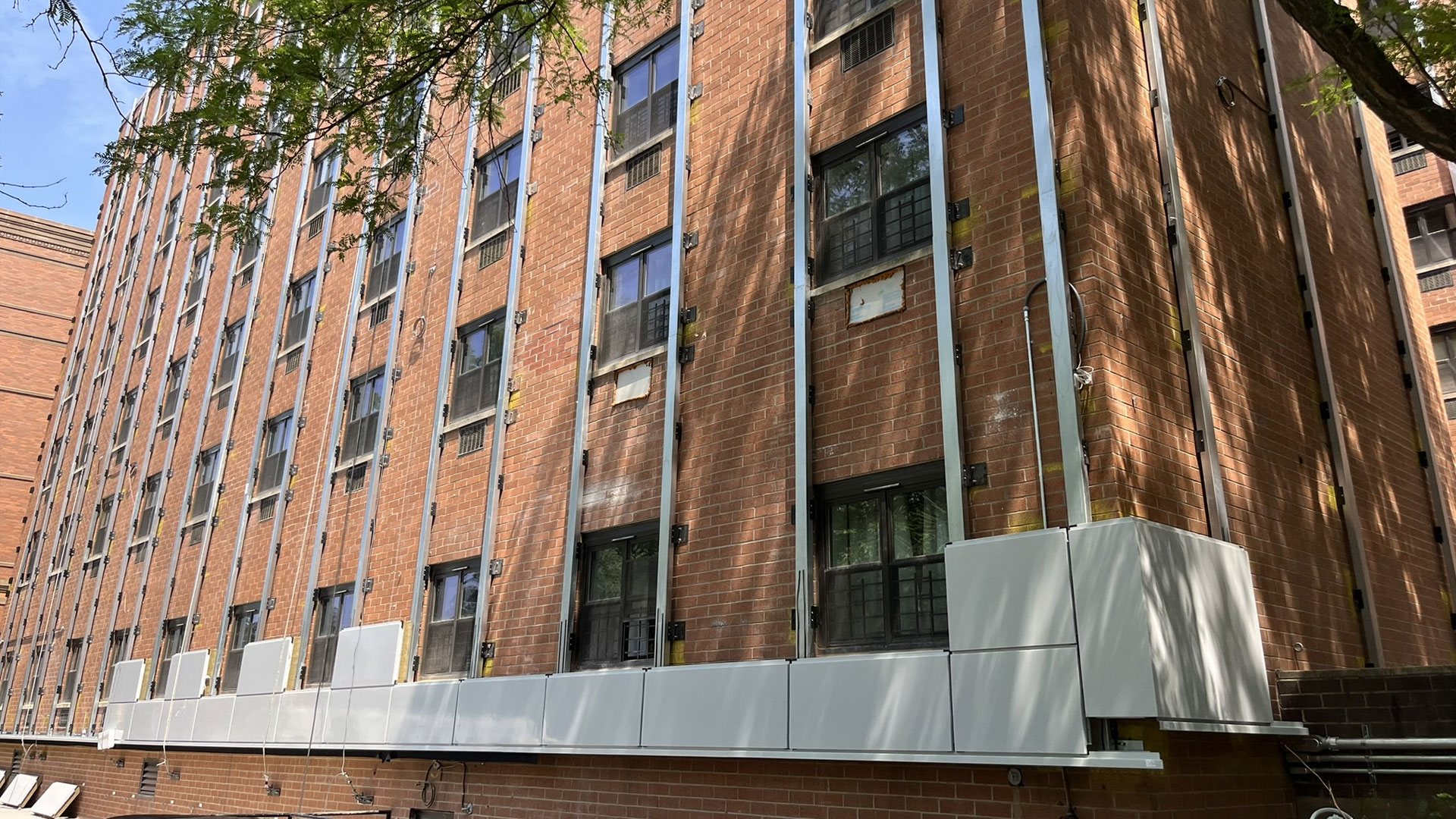
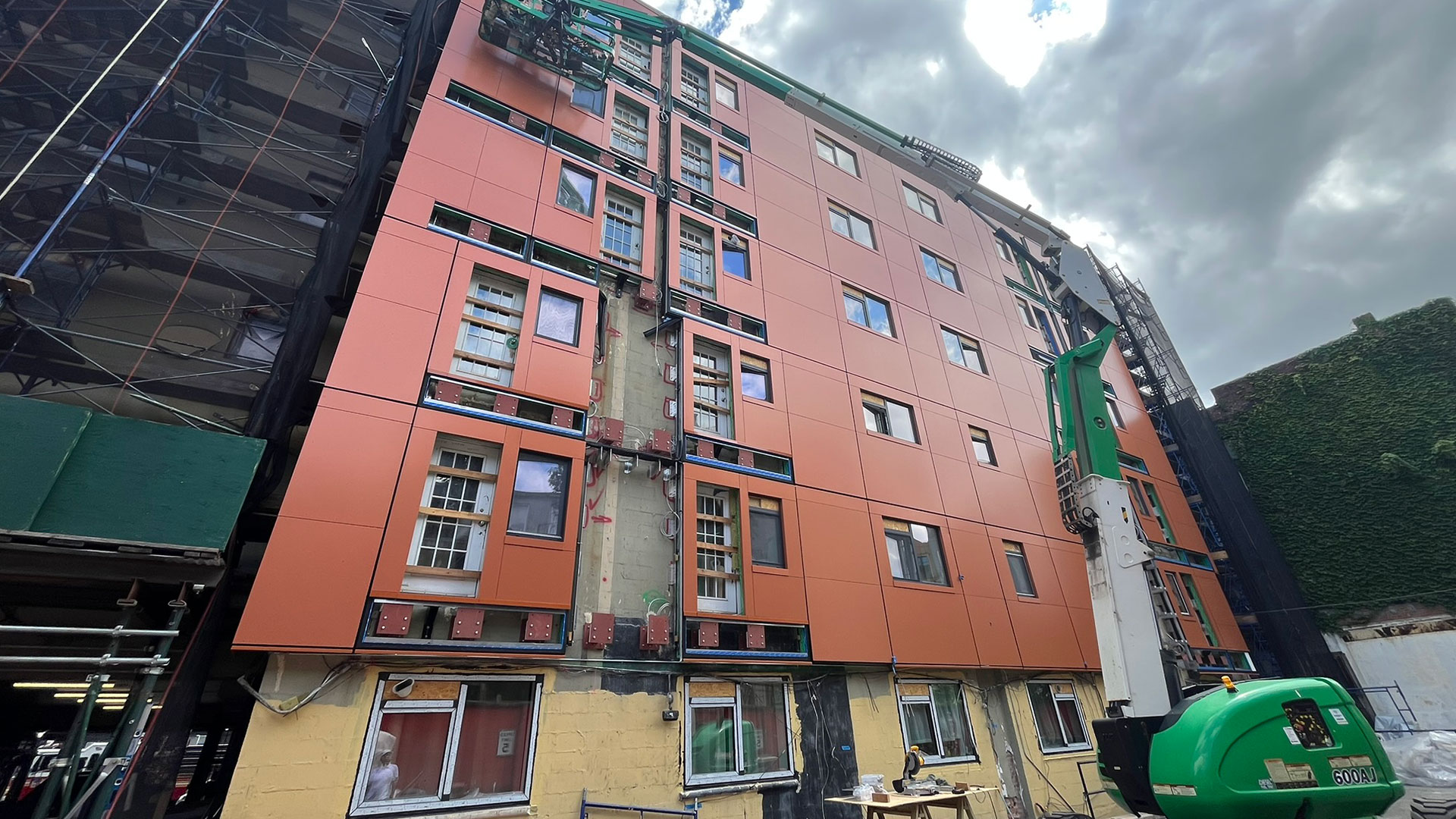



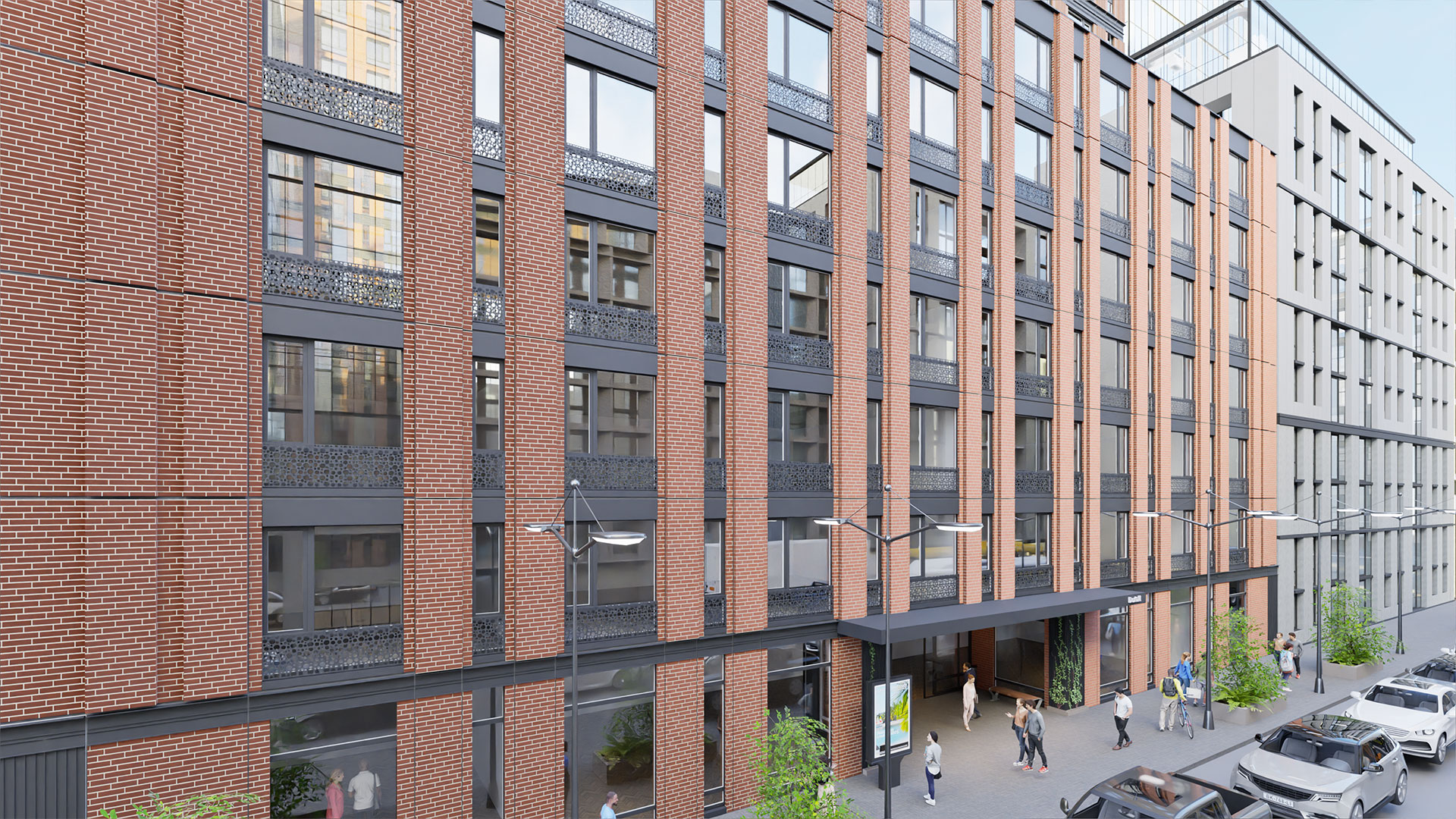


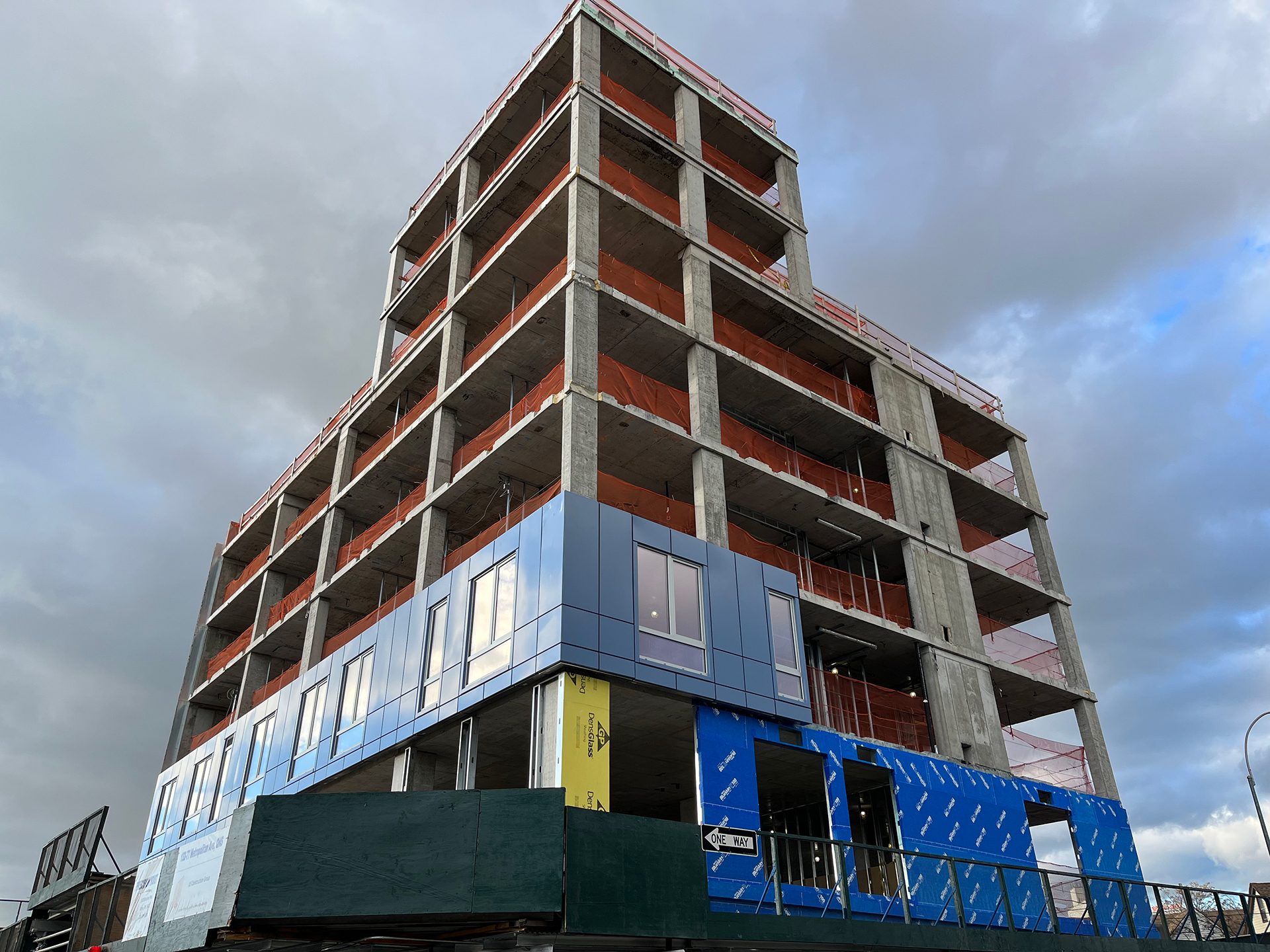
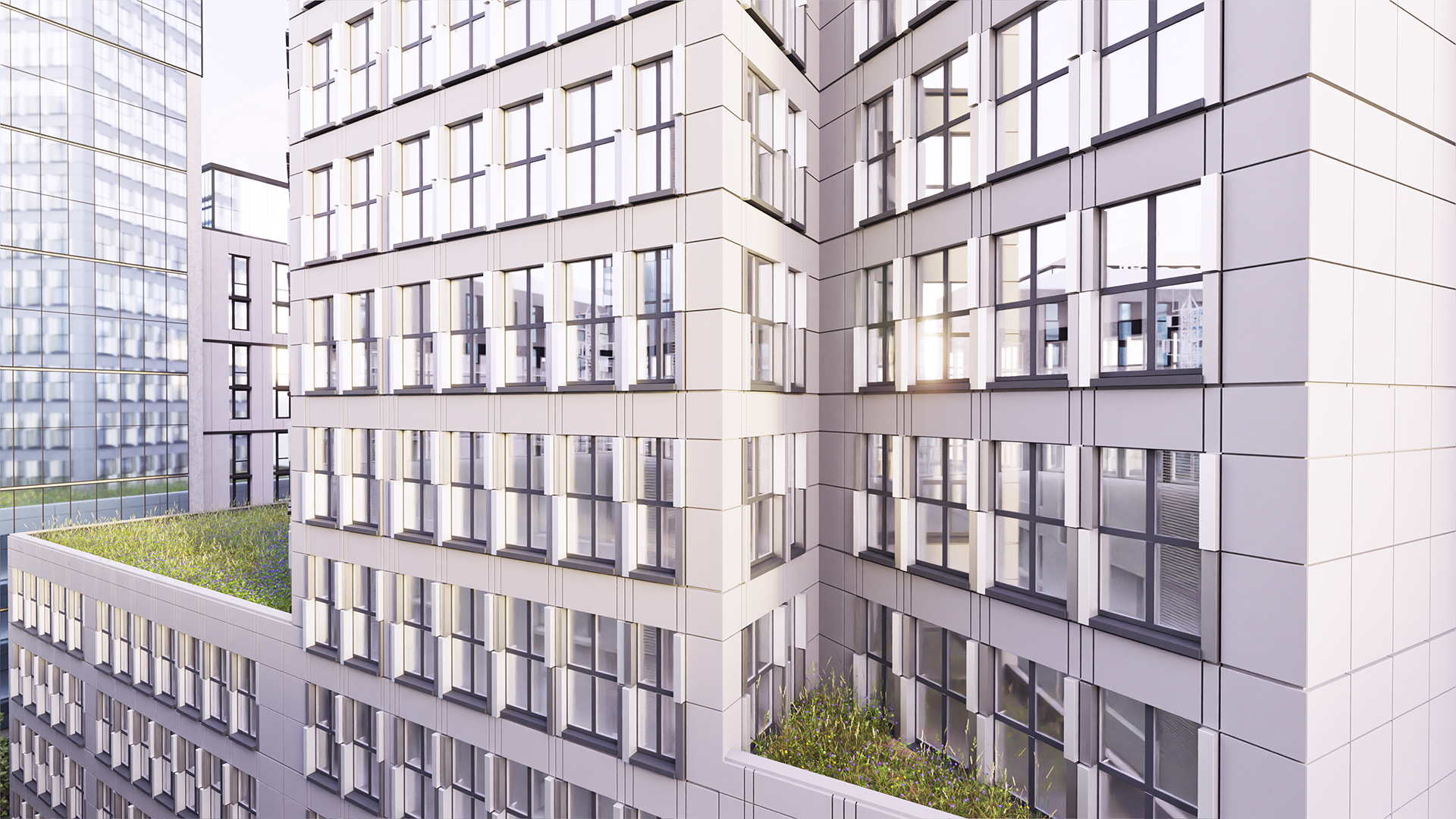






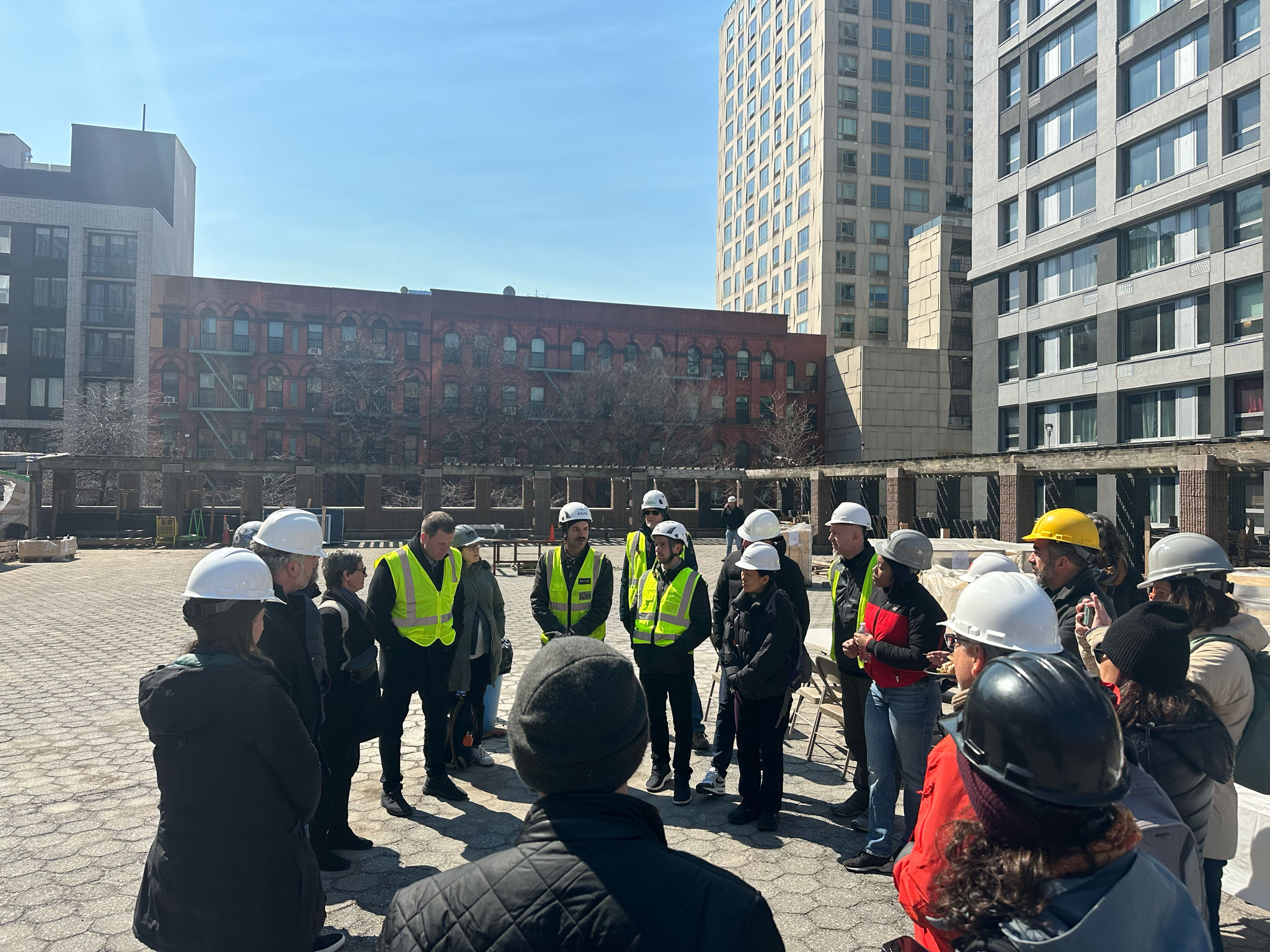



_format(webp).avif)
_format(webp)%20(6).avif)
_format(webp)%20(5).avif)
_format(webp)%20(4).avif)
_format(webp)%20(2).avif)
_format(webp)%20(3).avif)


.avif)
_format(webp)%20(2).avif)